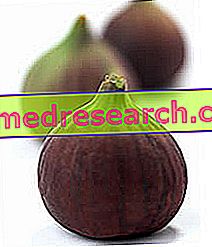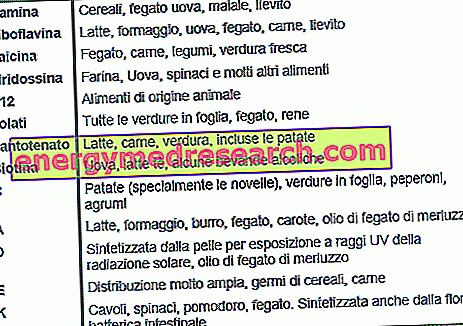Premise
From time immemorial, the fig tree is appreciated for its (fake) homonymous fruits, very sweet, fleshy and exquisite, which also attract the curiosity of insects and birds. The fig is a xerophilous plant, therefore adapted in arid environments with a hot and dry climate, and is therefore typical of subtropical and temperate areas.

Generality
The fig plant is an arboreal species belonging to the family of the Moracee : of the genus Ficus, there is both the species F. carica sativa, and F. carica caprificus, respectively domestic fig (true fig or female plant) and wild fig (caprificum or, simply, male plant).
After a brief analysis of the general characteristics of the fig tree, we will analyze in more detail the peculiarities of the female plant and its male variant.
The fig looks like a rather powerful tree, generally ranging in height from 6 to 10 meters; the bark that covers the tortuous trunk is rough and gray, and the branches end with pointed gems, covered with greenish scales. The branches are masked by large green leaves, oblong, rough, with oval contours: again, the leaves have 3 lobes (trilobate) or 5 (pentalobate), each of which is outlined by a rather irregular and serrated outline.
What most people call fruit is actually a false fruit: the fig, in fact, is a siconium, a fleshy and very sweet infructescence, covered by a delicate skin with a color varying from red to green, and from bluish to gray . Inside the fig tree, there are flowers, very small in size, constituted by an opening (ostilo), which acts as an entrance for the hymenoptera. The true fruits are instead numerous small achenes, positioned in the cavity of the inflorescence: each achene (the so-called seeds ) is set in the very sweet and delicious pulp. [taken from it.wikipedia.org/]
- Domestic fig (female plant)
The female fig plant is distinguished by its massive and powerful stem, wrapped in a smooth gray bark; the root system is rather expanded, albeit superficial. The female fig plant reaches considerable heights, sometimes exceeding 8-10 meters in height. The female fig also stands out above all for three factors:
- Presence of purely feminine flowers
- Production of early figs (or fioroni) and real figs. The first ones begin to form in autumn and are characterized by sterile female flowers, while the real figs, born in spring and matured in summer, carry female flowers that can be either fertile or sterile, depending on the species considered.
- Its function is to produce the seeds contained in the fruit
[taken from //www.agraria.org/]
- Caprifico (male plant)
If in the female fig tree only the female ones are born, in the male the flowers are also masculine, besides being feminine. The fruits produced are not edible; the male fig has the function of producing pollen.
Fertilization takes place by a specific insect.
Land and climate
As we have seen, fig is a typically xerophytic plant; therefore, when the temperature drops below 10 ° C below zero, in all probability the plant dies. Although the fig tree adapts very easily to the soil and areas where it is planted, it loves clay and sandy soils, while the fig tree suffers from lands with a high degree of humidity.
Dried fig
Fig drying is an excellent food preservation technique: this custom is mostly widespread in southern Italy, where the warm climate favors homogeneous drying. The fig must be harvested at full maturity and subsequently dried in the sun with the aid of physical or chemical treatments.

Nutritional properties
As we all know, figs are highly energetic fruits: they provide, in fact, 47 Kcal per 100 grams of product. Water constitutes 82% by weight. The fig contains a large carbohydrate content (11%), about 2% fiber, 1% protein and very little fat (0.2%). Figs are a concentrate of mineral salts, in particular potassium, magnesium and iron, but antioxidant vitamins also play an important role.
Video Recipes - Homemade fig jam
Fig Jam - Jam Without Pectin
X Problems with video playback? Reload from YouTube Go to Video Page Go to Video Recipes Section Watch the video on youtubeFor fig lovers, we recommend that you also follow our other figs-based videoricettes, such as the Crostata Senza Burro with Figs, the Figs Grated with Gelato and the Figs filled with Ricotta
Therapeutic properties
The fig is not only a delicious and succulent fruit: its use is also exploited in the phytotherapeutic field due to its many therapeutic virtues.
In recent years, the nutritive value of the figs has been enhanced for the research of the chemical substances contained in them:
- Emollient and expectorant properties of fig fruits;
- Re-mineralizing properties;
- Bechiche properties (relieves persistent cough) and emmenagogues (leaves and fruits);
- Laxative properties (fibers): unlike prickly pears (astringent properties), rich in tannins;
- Disinfectant / anti-inflammatory virtues of the mouth and oral cavity in general (latex decoction); [taken from Ragionese Dictionary of herbal medicine and phytotherapy, by A. Bruni and M. Nicoletti]
- Latex keratolytic properties: the application of latex directly in the insect bite reduces pain in situ ;
- Caustic properties: the latex gushing from the cuts is rich in proteases and amylases: in this regard, it is a good natural remedy to eliminate warts. In any case, the latex of the fig must be used with caution, to avoid suffering heavy skin irritations;
- Anti-inflammatory, digestive virtues, emmenagogues mostly attributed to the leaves containing coumarins, furocumarine (they can create episodes of photosensitization), bergaptene and psoralen. In some sensitive subjects, the simple contact with the leaves can generate irritability of the skin, emphasized by exposure to the sun. It is therefore recommended to promptly rinse with fresh water following contact with fig leaves, in addition to immediate removal from the sun for a few hours;
- Glaring properties: in the past, fig latex was used to curdle milk;
- Potential tanning properties: the widespread custom of applying fig latex on the skin to facilitate tanning must be re-evaluated. It has been observed that the application of fig latex on the skin before sun exposure is dangerous for the skin, as well as irritating: in fact, this practice must be discredited because it is responsible for burns and sometimes serious skin lesions;
- Gastric anitisecretive properties (macerated with fig buds).
Fig tree in brief, summary of the properties of the fig tree »



